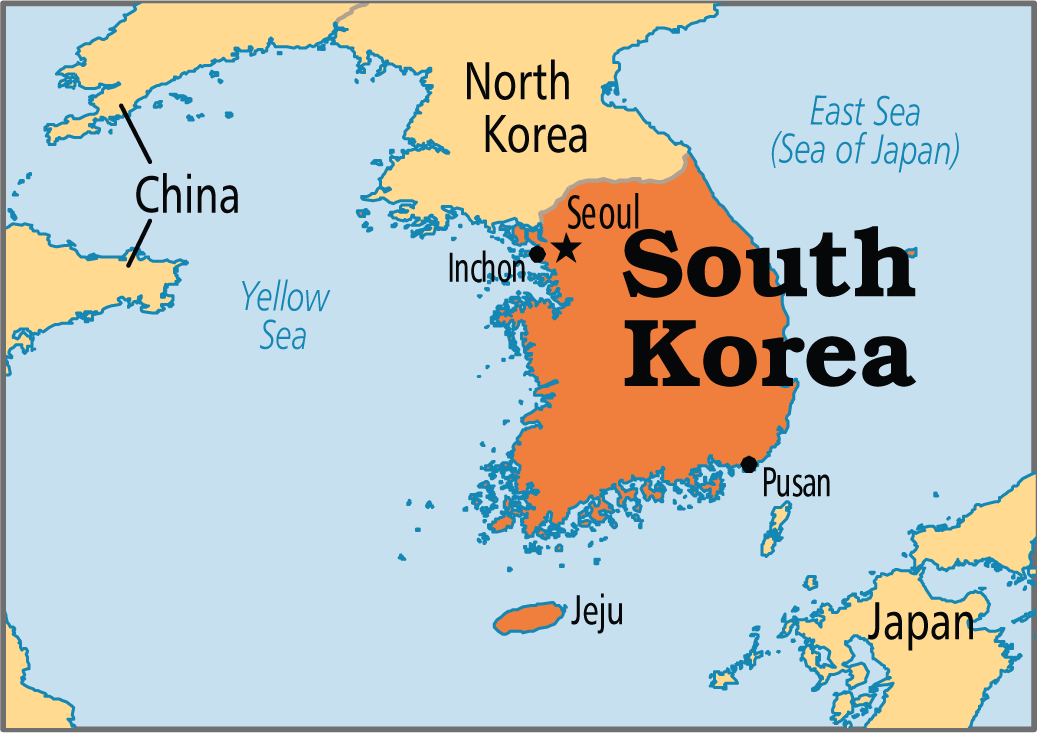International Relations
India-South Korea: Friendship Park
- 30 Mar 2021
- 7 min read
Why in News
Recently, Indian Defence Minister and his South Korean counterpart inaugurated the India-Korea Friendship Park in a ceremony at the Delhi Cantonment.
- Later on both the ministers concluded a bilateral meeting and explored different areas of cooperation.
- Earlier in February 2019, the Prime Minister of India visited South Korea (Republic of Korea).
Key Points
- About:
- Spread across a green area of six acres, the park includes an entrance gate made in Korean style, a jogging track, well landscaped garden and an amphitheatre.
- Has an imposing handshake artifact standing tall at the entrance bearing flags of India and South Korea.
- Has statue of General KS Thimayya, a celebrated soldier who led the Indian contingent in the Korean War as Chairman of Neutral Nations Repatriation Commission (NNRC) in Korea headed by India.
- Neutral Nations Repatriation Commission:
- One of the follow-up actions to the Armistice Agreement in the Korean War was the establishment of a NNRC which was to decide on the fate of over 20,000 prisoners of war from both sides.
- India was chosen as the Chair of the NNRC, with Poland and Czechoslovakia representing the Communist bloc and Sweden and Switzerland representing the Western world.
- Neutral Nations Repatriation Commission:
- The five pillars raised in the backdrop of General Thimayya’s statue are embossed with details of operations carried out by 60 Parachute Field Ambulance (deployed by India) during the Korean war where they had treated about 1,95,000 cases, and performed about 2,300 field surgeries.
- One pillar also encompasses Nobel Laureate Gurudev Rabindranath Tagore’s narration of Korea as “The Lamp of the East” which was published in Korean daily “Dong-A-ilbo” in 1929.
- Developed By:
- The park has been developed in joint consultation with the Ministry of Defence, Government of India, Indian Army, Delhi Cantonment Board, Embassy of Korea and Korean War Veterans Association of India.
- Significance:
- The park's significance is not only because of it being a symbol of strong India-South Korea friendly relations, but also as a monument to India’s contributions as part of 21 countries which participated in Korean war 1950-53, under the aegis of the United Nations.
- Issues Discussed at the Meet:
- Discussed maritime cooperation as part of the Indo-Pacific strategy and also cooperation in the defense industry and future technologies.
- The two countries have a logistics agreement helping the Indian navy while operating in the Indo-Pacific region.
- Discussed maritime cooperation as part of the Indo-Pacific strategy and also cooperation in the defense industry and future technologies.
India-South Korea Relations
- Political:
- During the Korean War (1950- 53), India played a major role in a cease-fire agreement signed between both the warring sides (North Korea and South Korea) and the ceasefire was declared on 27th July 1953.
- In May 2015, the bilateral relationship was upgraded to ‘special strategic partnership’.
- India has a major role to play in South Korea’s Southern Policy under which Korea is looking at expanding relations beyond its immediate region.
- Similarly, South Korea is a major player in India’s Act East Policy under which India aims to promote economic cooperation, cultural ties and develop strategic relationships with countries in the Asia-Pacific.
- Economic:
- The current bilateral trade between India and South Korea is at USD 21 billion and the target that has been set is USD 50 billion by the year 2030.
- India and South Korea have signed the Comprehensive Economic Partnership Agreement (CEPA), 2010 which has facilitated the growth of trade relations.
- To facilitate investment from Korea, India has launched a "Korea Plus” facilitation cell under ‘Invest India’ to guide, assist and handhold investors.
- India’s share in Korea’s global trade was 1.72% in 2020 and India’s contribution in Korea’s global imports increased from 0.78% in 2001 to 1.05% in 2020.
- Cultural:
- Korean Buddhist Monk Hyecho or Hong Jiao visited India from 723 to 729 AD and wrote the travelogue "Pilgrimage to the five kingdoms of India" which gives a vivid account of Indian culture, politics & society.
- Nobel Laureate Rabindranath Tagore had composed a short but evocative poem – 'Lamp of the East' - in 1929 about Korea's glorious past and its promising bright future.
- To further enhance cultural exchanges between India and Korea, Indian Cultural Centres (ICC) were established in Seoul in April 2011 and in Busan in December 2013.
- Multilateral Platforms Shared by Both the Countries:
Way Forward
- India and South Korea relations have made great strides in recent years and have become truly multidimensional, spurred by a significant convergence of interests, mutual goodwill and high level exchanges.
- However, there is massive scope to expand ties between India and South Korea and make it a unique relationship in Asia. What is needed is political will and new imagination in diverse areas such as cultural relations, building on people-to-people contacts, harnessing democracy and liberal values, and cementing civilisational connections.







